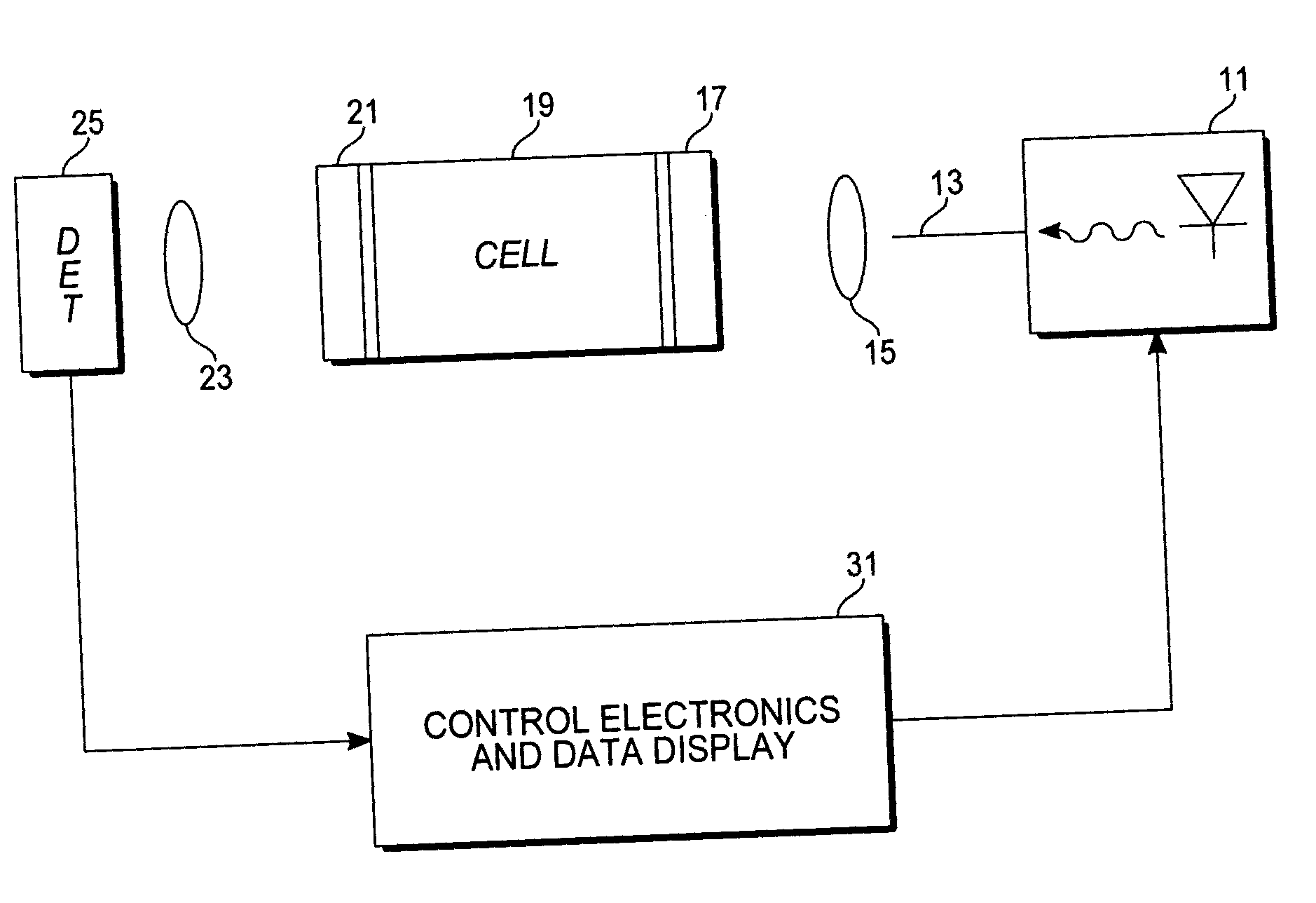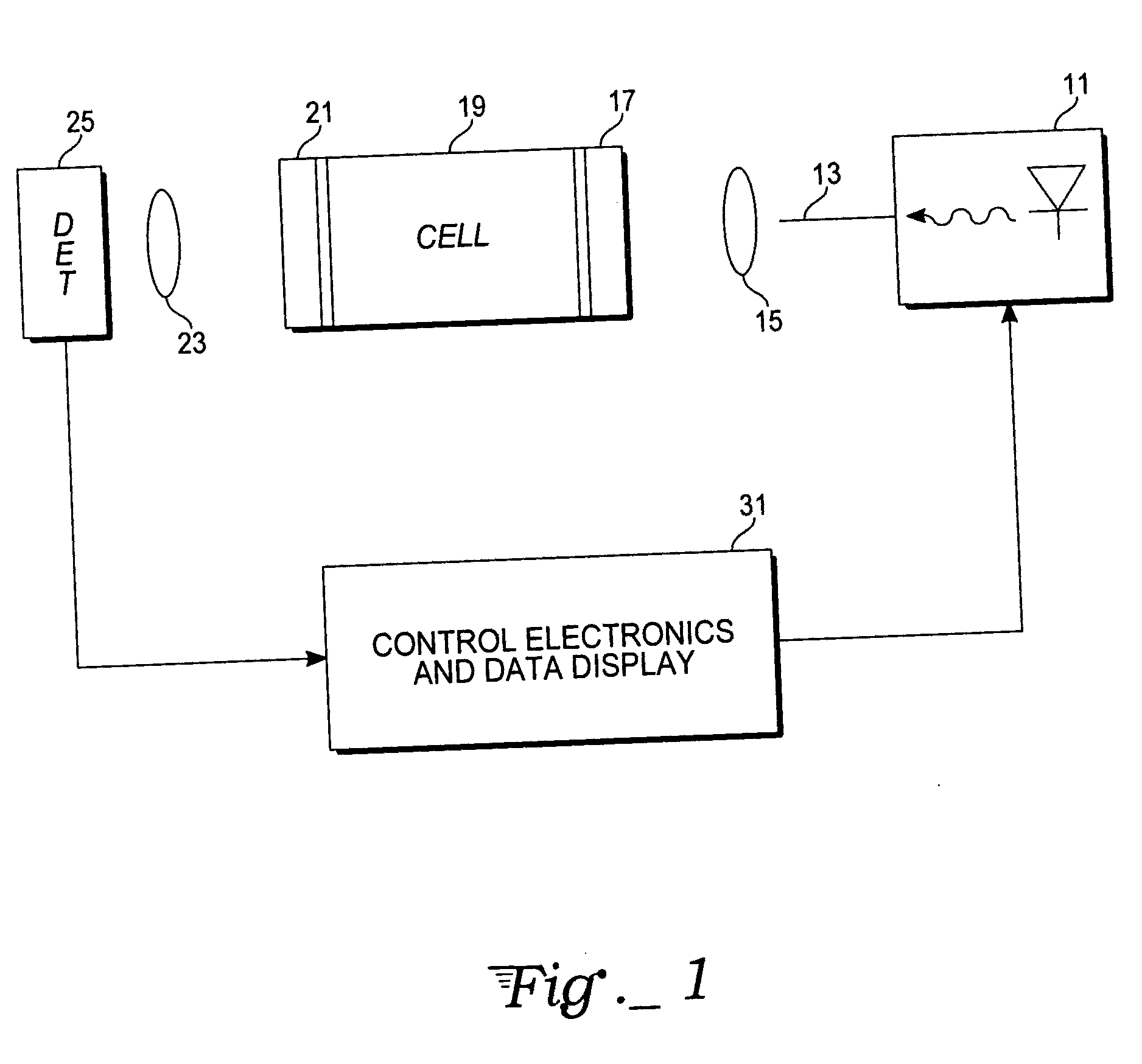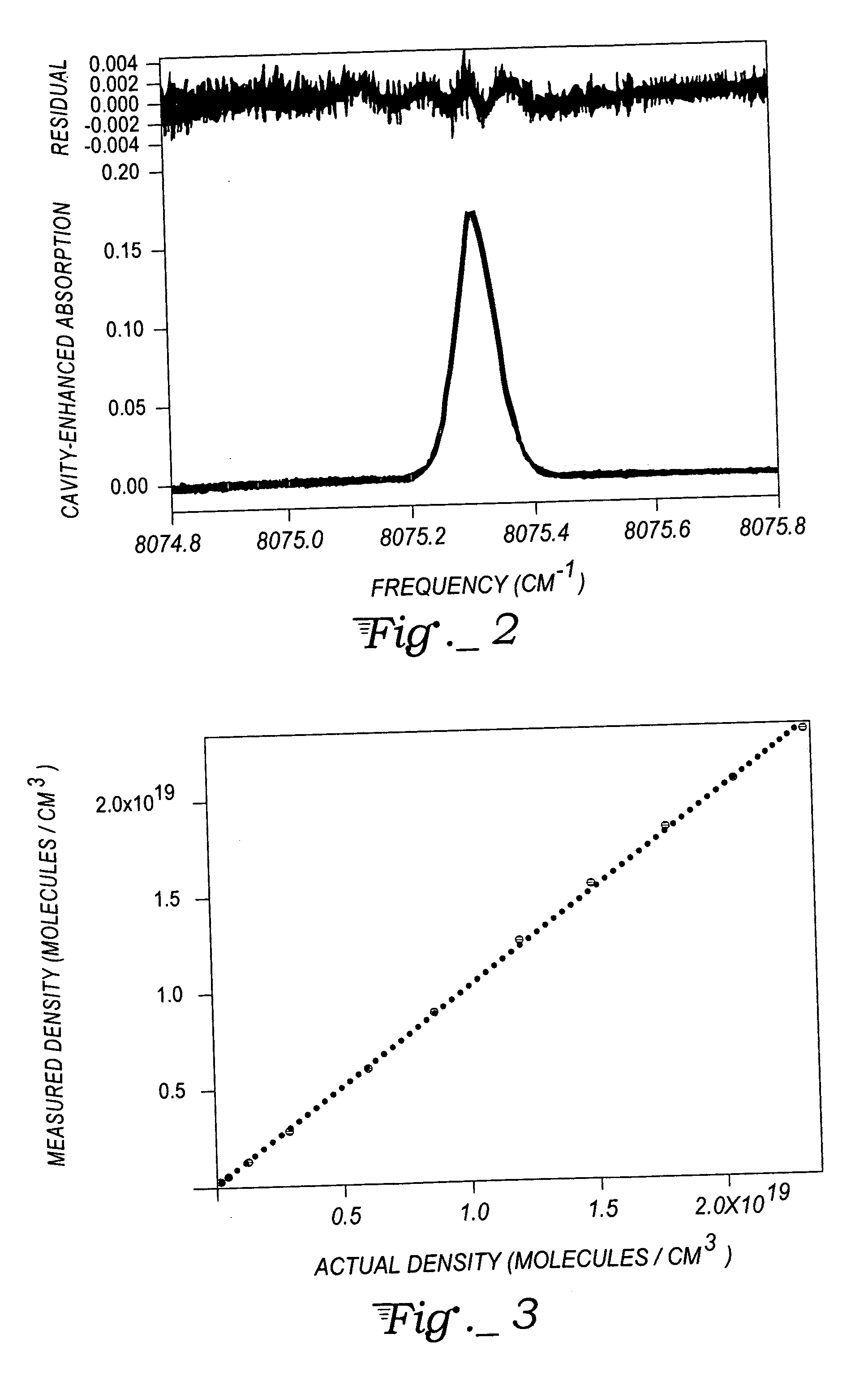Hydrogen sensor based upon quadrupole absorption spectroscopy
a quadrupole absorption spectroscopy and hydrogen sensor technology, applied in the field of hydrogen sensors, can solve the problems of reducing the absorption strength of these transitions, weak line absorption, and inability to easily measure using conventional techniques, and achieve the effect of increasing the effective path length of the sample gas
- Summary
- Abstract
- Description
- Claims
- Application Information
AI Technical Summary
Benefits of technology
Problems solved by technology
Method used
Image
Examples
Embodiment Construction
[0017] With reference to FIG. 1, a hydrogen sensor apparatus employing off-axis light injection into an optical cavity (defined between mirrors 17 and 21) is seen. A diode laser 11 produces light that can be tuned on and off the weak hydrogen absorption resonance. This light can be delivered to the sample gas cell 19 by means of a short fiber optic strand 13. The light is coupled into the sample cell 19 using a lens 15. The sample cell 19 is fitted with at least two mirrors 17 and 21 aligned so that the light coupled into the cell 19 is trapped inside the cell, resulting in a long effective path length. The light is injected into the sample cell by passing the light emerging from the fiber optic 13 through the first highly reflecting mirror 17. The mirrors 17 and 21 can be dielectric multi-layer coating mirrors that are designed to have a high reflectivity at the wavelength corresponding to the laser light and the weak hydrogen absorption. Most of the light is reflected away from th...
PUM
 Login to View More
Login to View More Abstract
Description
Claims
Application Information
 Login to View More
Login to View More - R&D
- Intellectual Property
- Life Sciences
- Materials
- Tech Scout
- Unparalleled Data Quality
- Higher Quality Content
- 60% Fewer Hallucinations
Browse by: Latest US Patents, China's latest patents, Technical Efficacy Thesaurus, Application Domain, Technology Topic, Popular Technical Reports.
© 2025 PatSnap. All rights reserved.Legal|Privacy policy|Modern Slavery Act Transparency Statement|Sitemap|About US| Contact US: help@patsnap.com



